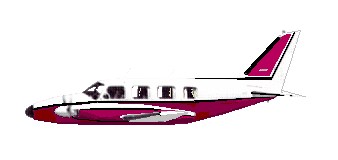 |
|||
|
Chieftain N3527E |
|||
|
Like the DC-3 in 1948 or like Caribbean Flight 912 in 1978, this aircraft was only a hand’s grasp away from landing when it vanished and left no trace. If the facts were entered into the encyclopedia, the case of Navajo N3527E would be classed a legend or myth. The date was March 26, 1986. The facts are simple, and follow like this. He revved up the motors, deafening any conversation inside, The shoreline below was crowded with tourists. Spring-break had just begun. The beaches were a mass of moving colors. The incoming rows of the surf were marked by the advancing thin white foaming crests. After its droning silhouette was seen to depart the shoreline, the plane angled northeast heading straight for West End. Grand Bahama came into view in 20 minutes, becoming bigger and bigger every minute. Next Villa reported at 10 miles west of West End, coming in for approach— about 5-7 minutes before landing. The sea below was dotted with yachts and sailboats, as West End is a customs port of entry into the Bahamas. There was no further contact with Villa. The plane never arrived. An emergency alarm was sounded that dashed Coast Guard units to the last reported position. The intensive search, confined to the area around Grand Bahama and northward, taking into account the Gulf Stream drift, was halted two days later with what amounts to a shrug of the shoulders. It is impressive what could not have been a factor in the Chieftain’s mysterious loss. Villa could not have gone off course, for instance, because ten miles away from West End is well within sight of the island. Every moment he was speaking to Miami or West End he was getting closer to the shore. The plane had two 350 horse power engines driving it 404 kms per hour. Within minutes he would have been over land. There was nothing obscuring his vision either. So within minutes after the radio call, perhaps seconds, the plane must have vanished, while not being seen by any boats off Grand Bahama to crash into the sea. Even more provocative, they heard no howling whine as it plummeted. If anybody’s attention was directed to the sky that morning, it was from the sudden silence, a silence made conspicuous when the routine hum of the charter was suddenly noticed to be gone. The NTSB report in this case is worthless, however, leading me to an instinctive feeling something else was afoot. Villa was a qualified pilot, so we are to infer. The investigator didn’t bother to get a copy of his certificate or even establish his age. The name of the 5 passengers are not even given. This was a charter plane, but apparently he was using the flight for personal reasons. There apparently was no radar coverage, and nobody saw fit to consult a transponder tracking, as in the case of Flight 201.
|
|||